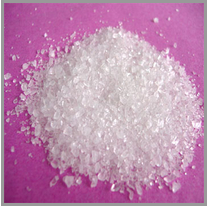Feed Ingredients

Animal Feeds play a vital part in keeping livestock healthy; many animals may become ill or even perish due to a lack of proper nutrients. Different animals require different nutrients and may react differently to certain feeds and nutrients. This fact has resulted in continuous research into this topic, and as a result, there are many types of animal feeds available for purchase, many having their own unique recipe of feed ingredients.
The feed ingredients have been divided into MACRO/MICRO nutrient categories, which are further organized into their respective main elements.
MACRO-NUTRIENTS
These nutrients tend to be of major biological use to livestock, and are required in greater quantities than other nutrients. In general, macro-nutrients include: water, protein, fat & cholesterol, fiber, and carbohydrates.
Corn Fiber view product page
Corn Fiber as an Animal Feed ingredient provides fiber, protein, and carbohydrates (starch).
MICRO-NUTRIENTS
Micro-nutrients include vitamins and minerals. The prefix microis given to this category of nutrients because the quantitative amounts that are required and consumed by animals are much smaller with respect to the quantities of macronutrients required.
Magnesium Oxide, MgO view product page
Magnesium Oxide is largely used as a mineral nutrient for balancing husbandry in animals such as: dairy cattle, poultry, equine, beef cattle, and aquaculture.
Magnesium is an essential nutrient that facilitates cellulose digestion and metabolism of carbohydrates, promotes circulation of phosphors and proteins, favors enzymatic cardiovascular health and appropriate function of nerve cells.
When pastures are lacking or have reduced magnesium levels, magnesium oxide is the most common form of supplemental magnesium used to prevent grass tetany. Grass tetany often occurs in the spring as a result of the consumption of lush forage, which has low levels of magnesium. Symptoms of grass tetany may include: frequent urination, erratic behavior and convulsions. If left untreated death may ensue within several hours. In locations where grass tetany is prevalent, it is recommended to also consider the dietary levels of sodium and potassium in addition to magnesium.*
Magnesium promotes the increase of fat content in milk and thickness in egg shells.
Manganous Oxide view product page
Micro-nutrient for animal feed.
Magnesium Sulfate view product page
Magnesium sulfates are used for fertilizer, feed, and feed premixes.
Monocalcium Phosphate (MCP) view product page
An inorganic compound with the formula: CaH4P2O8 that can be made by reacting calcium carbonate with phosphoric acid. It is a popular calcium-phosphate feed ingredient. Calcium phosphates are often used as a source of phosphors and calcium for aquatic animals, pig, poultry, and livestock.
Mono-Dicalcium Phosphate view product page
A calcium phosphate salt of phosphoric acid that is primarily used as a ingredient in animal feed to supply calcium and phosphorous to their dietary intake.
Urea view product page
An organic amide chemical with the formula: CO(NH2)2, much of the commercially produced urea is consumed by the agriculture industry, where it may be used as a feed ingredient. Feed grade urea supplies livestock with nitrogen.
Zinc Sulfate Monohydrate view product page
Micro nutrient for feed and feed premixes.
- Calcium Carbonate
- Calcium Phosphate
- Calcium Nitrate
- Copper Sulfate Pentahydrate
- Ferric Oxide
- Magnesite (Caustic Calcined)
- Magnesium Oxide
- Magnesium Sulfate
- Manganous Oxide
- Mono-Calcium Phosphate (MCP)
- Mono-DiCalcium Phosphate
- Phosphate Di-Calcium
- Potassium Chloride
- Potassium Nitrate
- Potassium Sulfate
- Urea
- Zinc Sulfate Monohydrate
back to top






